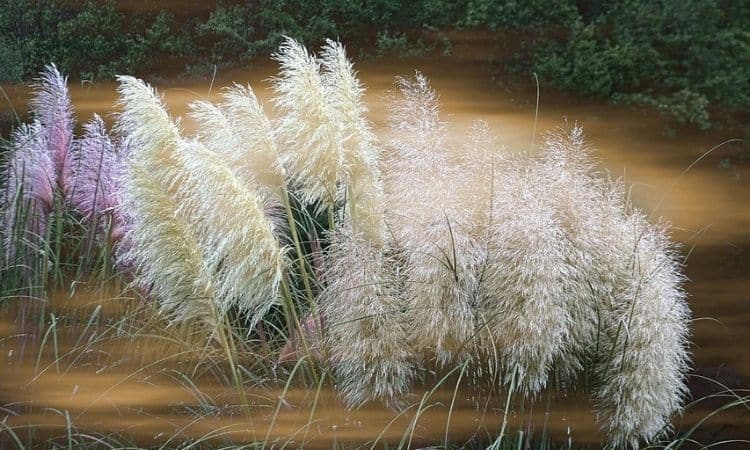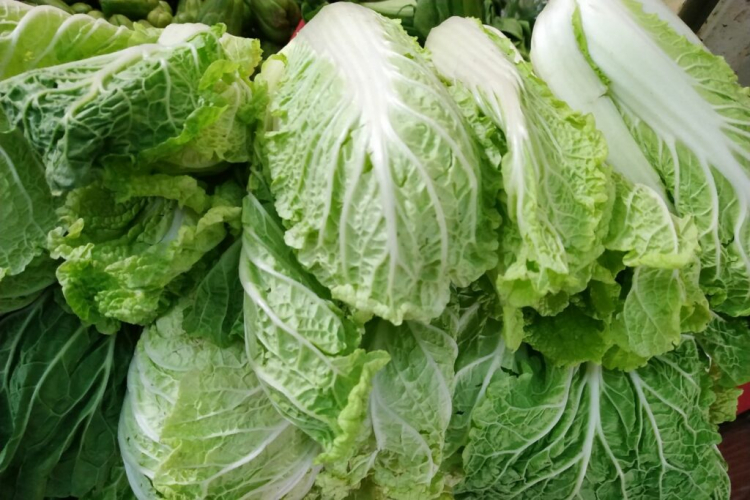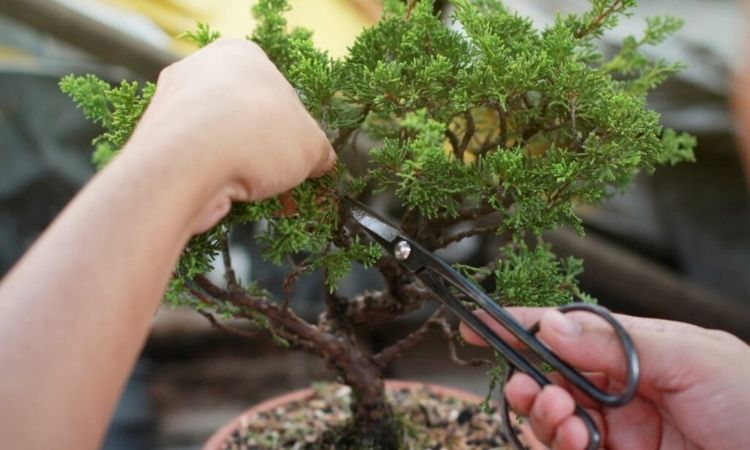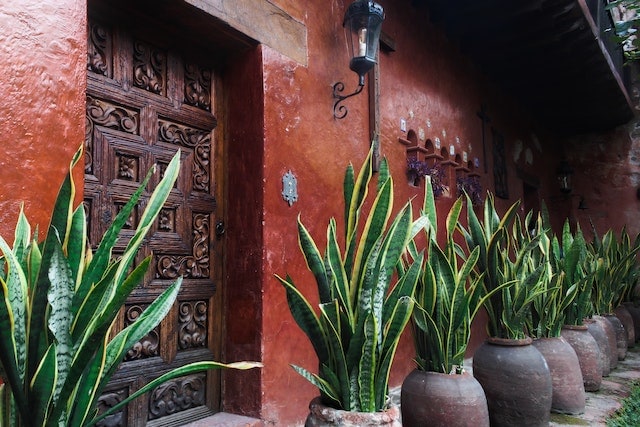Mugwort Plant: How To Grow, Harvest And Use
Mugwort plant has some names such as goose, broom, lady’s breath, or solstice herb because of its versatile uses. We show how to plant mugwort, harvest it yourself from the garden and use it.
Due to its medicinal properties, mugwort (Artemisia) has been attributed great importance since ancient times. But with mugwort, you get not just a mere useful plant, but a low-maintenance and versatile ornamental plant in your garden.
Mugwort Plant: Flower, Origin, And Properties
Table of Contents
Mugwort (Artemisia) is a plant that is widespread throughout the world and is also native to our area, but its exact origin is unknown. Most species of the genus, which belong to the composite plants (Asteraceae), are perennial, slightly woody perennials. Some of these give off a very intense fragrance that is not popular with everyone. Mugwort is easy to grow and grows rapidly, so it can reach heights of growth of up to 6 feet, depending on the species. If you bring it into your garden, however, you should be careful, because it quickly begins to proliferate, taking over the garden for itself. With its often silvery, pinnate, and sometimes hairy leaves and orange-yellowish flowers, mugwort delights not only as an ornamental plant but also as a spice and medicinal plant.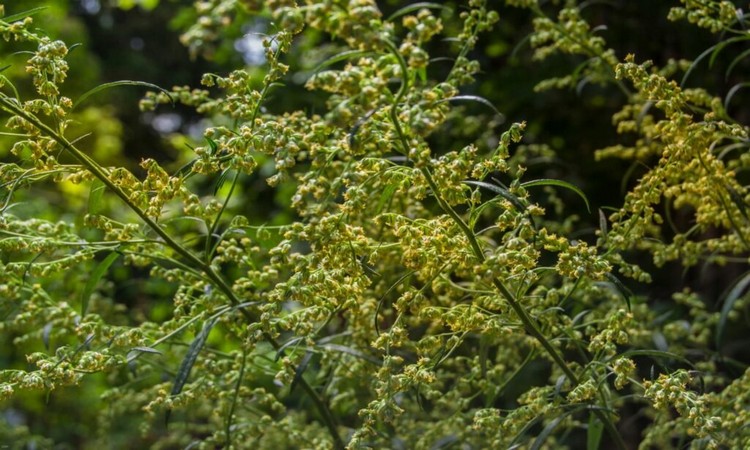
Furthermore, mugwort is very similar in growth, appearance, and leaf shape to mugwort ambrosia (Ambrosia artemisiifolia), as evidenced by its name. Mugwort ambrosia originates from North America but is increasingly becoming a problem weed in this country as well since its pollen has a strong allergenic effect and it also appears as a weed in agriculture. The distinction between mugwort and mugwort ambrosia is easy to make on the basis of the leaves since in mugwort ambrosia they are green on both sides instead of silvery on one side.
You might so like: Hamamelis: Everything To Grow And Care Of Witch Hazels Deciduous Shrub

Mugwort Species And Varieties
The genus Artemisia plants include over 250 species. Some mugwort species will be briefly introduced here. Common mugwort (A. Vulgaris): species of mugwort native to our area, up to 1.20 m tall; supposedly has digestive properties; used as a spice for fatty dishes.
- Annual mugwort (Artemisia annual) also Chinese mugwort: One of the few non-hardy mugwort species that usually does not flower in our area; fast-growing; height up to 2 m; suitable for temporary hedges with its dense foliage; caused a sensation a few years ago because it contains an active ingredient against malaria.
- Dwarf silver mugwort (Artemisia Schmidtiana): grows only about 8 inches tall; cushion-like habit and filigree, silvery leaves; a wonderful companion to dark-leaved ornamentals.
- Plants mugwort (Artemisia ludoviciana): A species of mugwort that originated in North America, where Native Americans used it in their ceremonies because its strong fragrance makes it suitable for incense; in Europe, it is mainly used as an ornamental plant, for example in Mediterranean gardens.
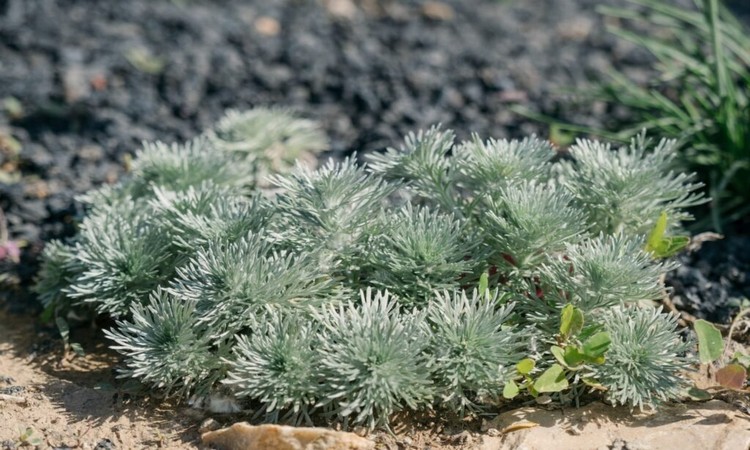
Planting Mugwort: Sowing, Location, And Procedure
Mugwort plant is best sown outdoors from May onwards. It makes relatively few demands on the location but prefers sunny, well-drained, and nutrient-rich places. If you have very clayey, firm soil, organic matter and plenty of sand will help loosen the soil and improve permeability. If the soil is very dense, it may even be necessary to loosen the soil deeply with a digging fork, for example, to prevent waterlogging.
Since mugwort grows quickly and large, 2 to 3 seeds should be sown with a distance of 28 feet. Then, after a few weeks, leaving only the strongest plantlet. Mugwort is a light germinator, so it should be covered only lightly with soil.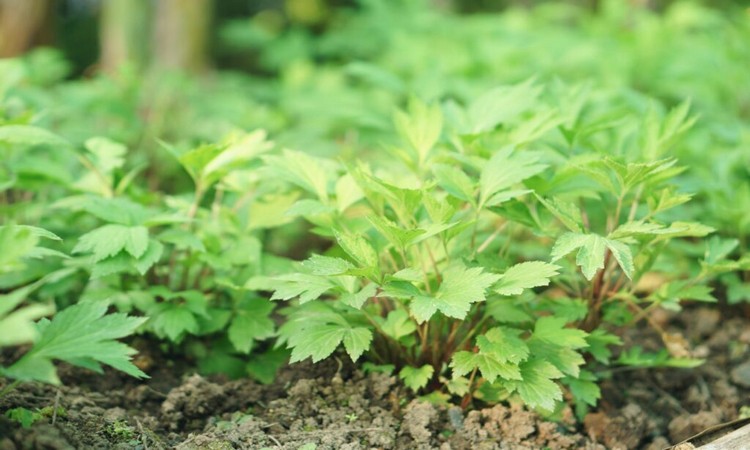
The Right Care: Is Mugwort Winter-Hardy?
Except for Artemis annual, all species of mugwort are hardy. However, the entire above-ground portion of the mugwort plant dies over the winter, so anything that doesn’t like it can be cut off in late fall. Mugwort will then sprout again from the rootstock in the spring.
- Fertilize mugwort: As a rule, mugwort does not need to be fertilized. However, as an indicator of nitrogen-rich soils, it grows more vigorously if it is sufficiently supplied with this main nutritive element.
- Watering mugwort: Watering mugwort is only necessary during long, hot dry periods, as it is basically adapted to dry sites.
Harvesting and using mugwort
Harvest mostly the closed flowers at the beginning of the mugwort’s blooming period between June and July. Older flowers and leaves contain significantly more bitter substances. Mugwort can be used fresh or dried. To preserve it, harvest about 15-24 inches long branches with flowers and hang them to dry in a warm, airy place.
Nowadays, mugwort is mostly used as a culinary herb. It contains the essential oils camphor, cineole, and thujone, which have a germ- and fungus-inhibiting effect, and is rich in bitter substances. On the one hand, this protects it from predators, on the other hand, they support our digestion, which is why mugwort is often added as a spice to fatty dishes, such as the classic roast goose.
But its use is not limited to that. With its bitter and aromatic, spicy flavor, the young leaves of mugwort can be used as a salad garnish or the flowers as a component of Mediterranean herb mixes. For example, a common use as a home remedy is to prepare a simple mugwort tea for stomach ailments. For this, 1 teaspoon of dried mugwort is poured over a cup of boiling water and allowed to steep for 1 – 2 minutes.
Is Mugwort Poisonous?
As long as the amount consumed is small, it is harmless to most people and has antispasmodic and analgesic effects. However, because mugwort contains the essential oil thujone, which is considered harmful, excessive doses can cause vomiting, among other things. Pregnant women should therefore avoid using mugwort completely to be on the safe side. Allergic to mugwort can react people who have an allergy to composite plants. Animals are generally uninterested in the rather coarse, hard stems. And even if they do try it, small amounts are not harmful to animals either.
If you want to know more plants of the genus Artemisia, you can, for example, read on in our article about wormwood.

